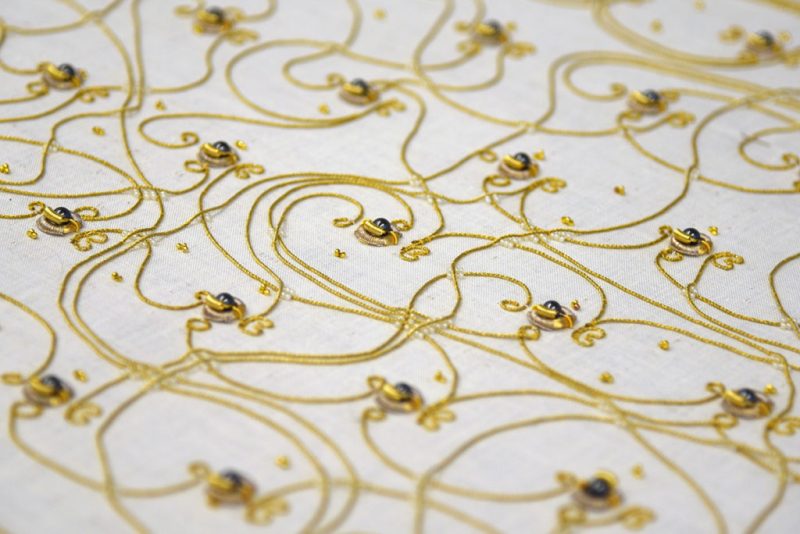By now we’ve all seen ways to manufacture your own PCBs. There are board shops who will do small orders for one-off projects, or you can try something like the toner transfer method if you want to get really adventurous. One thing we haven’t seen is a circuit board that’s stitched together, but that’s exactly what a group of people at a Vienna arts exhibition have done.
The circuit is stitched together on a sheet of fabric using traditional gold embroidery methods for the threads, which function as the circuit’s wires. The relays are made out of magnetic beads, and the entire circuit functions as a fully programmable, although relatively rudimentary, computer. Logic operations are possible, and a functional schematic of the circuit is also provided. Visitors to the expo can program the circuit and see it in operation in real-time.
While this circuit gives new meaning to the term “wearables”, it wasn’t intended to be worn although we can’t see why something like this couldn’t be made into a functional piece of clothing. The main goal was to explore some historic techniques of this type of embroidery, and explore the relationship we have with the technology that’s all around us. To that end, there have been plenty of other pieces of functional technology used as art recently as well, but of course this isn’t the first textile computing element to grace these pages.
Thanks to [Thinkerer] for the tip!

















“One thing we haven’t seen …”. Except maybe here on HaD: https://hackaday.com/2018/04/15/hackaday-links-april-15th-2018/ ;-)
Hm. I don’t think those bead relays would work very well.
Stiched circuits are very common in wearable electronics – outfits like Adafruit have been preaching this for what, ten years?
But they do usually have…you know…traditional circuit elements involved in the circuit. And the silver/nickel/steel threads aren’t exactly pleasant to work with. Very cool!
The people involved have, I think more interestingly, knitted together resistors, capacitors, and coils, just using mixtures of conductive and insulating threads, and certain knitting patterns. Resistors depend on using different threads with different resistances per metre. A capacitor is, of course, just conductors separated by an insulator.
So…
We are now able to make a tapestry that not only shows a “snapshot” of history, but…
(grasping for the right words)